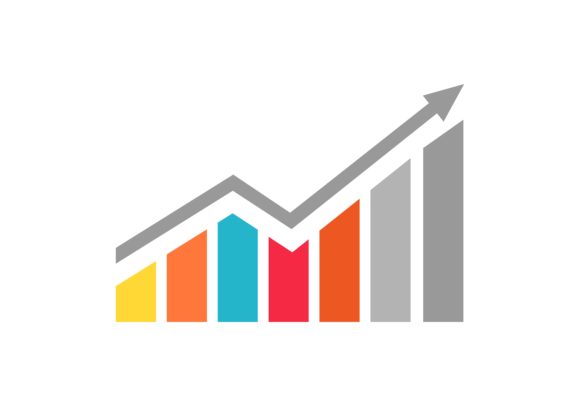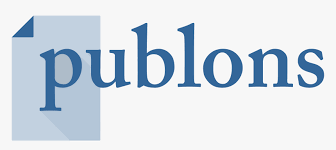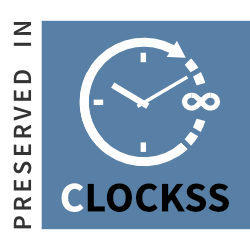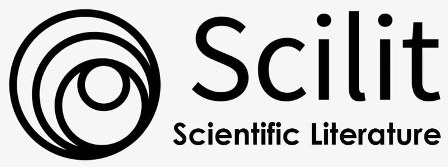Unraveling The Barriers to Effective Waste Management in The Ethiopian Construction Industry: A Multi-Method Qualitative Approach
DOI:
https://doi.org/10.31272/jeasd.2739Keywords:
Circular Economy, Construction Industry, Construction and Demolition Waste, Delphi Technique, Systematic literature reviewAbstract
There are various obstacles in Ethiopia's construction industry when managing construction and demolition waste. This paper aims to investigate the main barriers to managing construction and demolition waste in Ethiopia's construction industry. The diffusion of innovations theory and institutional theory served as the paper's theoretical foundations. A Delphi procedure was used after a systematic literature review as part of a multi-method qualitative strategy. Twenty-three documents were selected for additional review through a systematic literature review. A thematic analysis of the various barriers in the screened publications was conducted using ATLASti23. After that, a Delphi was held with 15 panelists with sufficient construction industry experience and knowledge. After every three rounds, Kendall's coefficient of concordance was calculated to assess the experts' agreement on the barriers. The absence of commitment and interest by project stakeholders, lack of integration among stakeholders, Inadequate waste disposal procedures, lack of government support and incentives, and insufficient planning on waste management were among the top ten major barriers explored. Addressing the highlighted barriers is vital to moving closer to a future with a more environmentally conscious construction industry.
References
World Economic Forum. 2016. Shaping the Future of Construction: A Breakthrough in Mindset and Technology, Geneva.
http://dx.doi.org/10.13140/RG.2.2.21381.37605
A. Al-Otaibi et al., “Identifying the Barriers to Sustainable Management of Construction and Demolition Waste in Developed and Developing Countries,” Sustainability, vol. 14, no. 13, p. 7532, Jun. 2022, doi: https://doi.org/10.3390/su14137532.
T. I. Hentges et al., "Circular economy in the Brazilian construction industry: Current scenario, challenges, and opportunities," Waste Management & Research: The Journal for a Sustainable Circular Economy, p. 0734242X2110450, Oct. 2021, doi: https://doi.org/10.1177/0734242x211045014.
Y. Tekalign, “Ethiopia’s Economic Growth in the Context of the Africa Rising Debate,” The Governance, Security and Development Nexus, pp. 237–251, Oct. 2020, doi: https://doi.org/10.1007/978-3-030-49348-6_12.
K. Kabirifar, M. Mojtahedi, C. Changxin Wang, and T. Vivian W.Y., “A conceptual foundation for effective construction and demolition waste management,” Cleaner Engineering and Technology, vol. 1, p. 100019, Dec. 2020, doi: https://doi.org/10.1016/j.clet.2020.100019.
H. Yuan, L. Shen, and J. Wang, “Major obstacles to improving the performance of waste management in China’s construction industry,” Facilities, vol. 29, no. 5/6, pp. 224–242, Apr. 2011, doi: https://doi.org/10.1108/02632771111120538.
W. Ma, T. Liu, J. L. Hao, W. Wu, and X. Gu, “Towards a circular economy for construction and demolition waste management in China: Critical success factors,” Sustainable Chemistry and Pharmacy, vol. 35, p. 101226, Oct. 2023, doi: https://doi.org/10.1016/j.scp.2023.101226.
B. Huang, X. Wang, H. Kua, Y. Geng, R. Bleischwitz, and J. Ren, "Construction and demolition waste management in China through the 3R principle," Resources, Conservation, and Recycling, vol. 129, pp. 36–44, Feb. 2018, doi: https://doi.org/10.1016/j.resconrec.2017.09.029.
Wu, W, Xie, L & Li, J. 2022. An integrated trading platform for construction and demolition waste recovery in a circular economy. Sustainable Chemistry and Pharmacy. 25100597.
http://dx.doi.org/10.1016/j.scp.2022.100597
A. Gallego-Schmid, H.-M. Chen, M. Sharmina, and J. M. F. Mendoza, “Links between circular economy and climate change mitigation in the built environment,” Journal of Cleaner Production, vol. 260, p. 121115, Jul. 2020, doi: https://doi.org/10.1016/j.jclepro.2020.121115.
K. D. Véliz, J. P. Walters, C. Busco, and M. Vargas, “Modeling barriers to a circular economy for construction demolition waste in the Aysén region of Chile,” Resources, conservation & recycling advances, vol. 18, pp. 200145–200145, Oct. 2023, doi: https://doi.org/10.1016/j.rcradv.2023.200145.
H. Yuan, “Barriers and countermeasures for managing construction and demolition waste: A case of Shenzhen in China,” Journal of Cleaner Production, vol. 157, pp. 84–93, Jul. 2017, doi: https://doi.org/10.1016/j.jclepro.2017.04.137.
J. C. Lammers and M. A. Garcia, “Institutional Theory Approaches,” The International Encyclopedia of Organizational Communication, pp. 1–10, Mar. 2017, doi: https://doi.org/10.1002/9781118955567.wbieoc113.
J. W. Dearing and J. G. Cox, “Diffusion of Innovations Theory, Principles, and Practice,” Health Affairs, vol. 37, no. 2, pp. 183–190, Feb. 2019.http://dx.doi.org/10.1377/hlthaff.2017.1104
M. Saunders, P. Lewis, and A. Thornhill, “Title: Research Methods for Business Students Author,” 2009. Available: https://amberton.edu/wp-content/uploads/2024/07/RGS6035_E2_Fall2024.pdf
S. Masè, “Art and Business,” International series in advanced management studies, pp. 9–20, Jan. 2020, doi: https://doi.org/10.1007/978-3-030-51769-4_2.
M. J. Page et al., “Updating guidance for reporting systematic reviews: development of the PRISMA 2020 statement,” Sep. 2020, doi: https://doi.org/10.31222/osf.io/jb4dx.
D. Sekayi and A. Kennedy, “Qualitative Delphi Method: A Four Round Process with a Worked Example,” The Qualitative Report, vol. 22, no. 10, Oct. 2017, doi: https://doi.org/10.46743/2160-3715/2017.2974.
R. N. H. R. M. Noor, I. R. Endut, A. R. M. Ridzuan, N. H. Dahalan, J. N. Yunus, and N. Tutur, “Major challenges to improve the performance of construction waste management process: A case study in Klang Valley,” 2018, doi: https://doi.org/10.1063/1.5062680.
B. I. Oluleye, D. W. M. Chan, T. O. Olawumi, and A. B. Saka, “Assessment of symmetries and asymmetries on barriers to circular economy adoption in the construction industry towards zero waste: A survey of international experts,” Building and Environment, vol. 228, p. 109885, Jan. 2023, doi: https://doi.org/10.1016/j.buildenv.2022.109885.
H. Al-Raqeb, S. H. Ghaffar, M. J. Al-Kheetan, and M. Chougan, “Understanding the challenges of construction demolition waste management towards circular construction: Kuwait Stakeholder’s perspective,” Cleaner Waste Systems, vol. 4, p. 100075, Apr. 2023, doi: https://doi.org/10.1016/j.clwas.2023.100075.
Z. Bao, W. M. W. Lee, and W. Lu, “Implementing on-site construction waste recycling in Hong Kong: Barriers and facilitators,” Science of The Total Environment, vol. 747, p. 141091, Jul. 2020, doi: https://doi.org/10.1016/j.scitotenv.2020.141091.
M. Alite et al., “Construction and demolition waste management in Kosovo: a survey of challenges and opportunities on the road to circular economy,” vol. 25, no. 2, pp. 1191–1203, Jan. 2023, doi: https://doi.org/10.1007/s10163-022-01577-5.
Md. R. Hasan, Md. S. I. Sagar, and B. C. Ray, “Barriers to improving construction and demolition waste management in Bangladesh,” International Journal of Construction Management, pp. 1–15, Mar. 2022, doi: https://doi.org/10.1080/15623599.2022.2056804.
V. Bhavsar, S. R. Sridharan, and J. S. Sudarsan, “Barriers to circular economy practices during construction and demolition waste management in an emerging economy,” Resources, Conservation & Recycling Advances, vol. 20, p. 200198, Dec. 2023, doi: https://doi.org/10.1016/j.rcradv.2023.200198.
Chen, Z, Liu, P & Yang, Y. 2017. Sustainable Building and Integrated Construction Waste Management Challenges and Strategies for China. In: 3rd ICHSSR Sustainable. V. 121. 334–339.
http://dx.doi.org/10.2991/ichssr-17.2017.68
J. Liu, P. Wu, Y. Jiang, and X. Wang, “Explore potential barriers of applying circular economy in construction and demolition waste recycling,” Journal of Cleaner Production, vol. 326, p. 129400, Dec. 2021, doi: https://doi.org/10.1016/j.jclepro.2021.129400.
E. Ayçin and S. Kayapinar Kaya, “Towards the circular economy: Analysis of barriers to implementation of Turkey’s zero waste management using the fuzzy DEMATEL method,” Waste Management & Research: The Journal for a Sustainable Circular Economy, p. 0734242X2098878, Feb. 2021, doi: https://doi.org/10.1177/0734242x20988781.
N. Udawatta, J. Zuo, K. Chiveralls, H. Yuan, Z. George, and A. Elmualim, “MAJOR FACTORS IMPEDING THE IMPLEMENTATION OF WASTE MANAGEMENT IN AUSTRALIAN CONSTRUCTION PROJECTS,” Journal of Green Building, vol. 13, no. 3, pp. 101–121, Jun. 2018, doi: https://doi.org/10.3992/1943-4618.13.3.101.
K. L. A. K. T. Liyanage, K. G. A. S. Waidyasekara, and H. Mallawaarachchi, “Adopting the Zero Waste Concept for Eliminating C&D Waste in the Construction Industry,” MATEC Web of Conferences, vol. 266, p. 02008, 2019, doi: https://doi.org/10.1051/matecconf/201926602008.
N. Wahi, C. Joseph, R. Tawie, and R. Ikau, “Critical Review on Construction Waste Control Practices: Legislative and Waste Management Perspective,” Procedia - Social and Behavioral Sciences, vol. 224, pp. 276–283, Jun. 2016, doi: https://doi.org/10.1016/j.sbspro.2016.05.460.
I. Papamichael, I. Voukkali, Pantelitsa Loizia, and A. A. Zorpas, “Construction and demolition waste framework of circular economy: A mini review,” Waste Management & Research, Aug. 2023, doi: https://doi.org/10.1177/0734242x231190804.
M. H. I. Abd Rahim and N. Kasim, “Conceptual Model for Systematic Construction Waste Management,” MATEC Web of Conferences, vol. 87, p. 01008, Dec. 2016, doi: https://doi.org/10.1051/matecconf/20178701008.
L. Al Tawil, M. A. Massoud, M. Bardus, and I. Alameddine, “Disaster waste management challenges and enabling factors for strategic planning: The case of the Beirut Port explosion,” Waste Management & Research: The Journal for a Sustainable Circular Economy, p. 0734242X2311516, Feb. 2023, doi: https://doi.org/10.1177/0734242x231151602.
T. Alemayehu, A. Osman, and H. Goitom, “Assessment of Construction Waste Management Practice in Mekelle, northern Ethiopia: Challenges and Opportunities,” Momona Ethiopian Journal of Science, vol. 13, no. 1, pp. 177–190, Aug. 2021, doi: https://doi.org/10.4314/mejs.v13i1.10.
“Identification of the Factors, Barriers, and Motivations that Influence the Construction and Demolishing Waste Generation and Management,” International Journal of Recent Technology and Engineering, vol. 8, no. 2S11, pp. 2619–2623, Nov. 2019, doi: https://doi.org/10.35940/ijrte.b1317.0982s1119.
P. Nasa, R. Jain, and D. Juneja, “Delphi methodology in healthcare research: How to decide its appropriateness,” World Journal of Methodology, vol. 11, no. 4, pp. 116–129, Jul. 2021, doi: https://doi.org/10.5662/wjm.v11.i4.116.
A. Fink, J. Kosecoff, M. Chassin, and R. H. Brook, "Consensus methods: characteristics and guidelines for use." American Journal of Public Health, vol. 74, no. 9, pp. 979–983, Sep. 1984, doi: https://doi.org/10.2105/ajph.74.9.979.
E. E. Ameyaw and A. P. C. Chan, “Risk ranking and analysis in PPP water supply infrastructure projects,” Facilities, vol. 33, no. 7/8, pp. 428–453, May 2015, doi: https://doi.org/10.1108/f-12-2013-0091.
G. Y. Debela, "Critical success factors (CSFs) of public-private partnership (PPP) road projects in Ethiopia," International Journal of Construction Management, vol. 22, no. 3, pp. 1–12, Jun. 2019, doi https://doi.org/10.1080/15623599.2019.1634667.
Leila Moradi Shahdadi, Babak Aminnejad, Hadi Sarvari, and Daniel, “Determining the Critical Risk Factors of Implementing Public–Private Partnership in Water and Wastewater Infrastructure Facilities: Perspectives of Private and Public Partners in Iran,” Buildings, vol. 13, no. 11, pp. 2735–2735, Oct. 2023, doi: https://doi.org/10.3390/buildings13112735.
Downloads
Key Dates
Received
Revised
Accepted
Published Online First
Published
Issue
Section
License
Copyright (c) 2025 Henok Asfaw Hailu (PhD) (Author)

This work is licensed under a Creative Commons Attribution 4.0 International License.

















